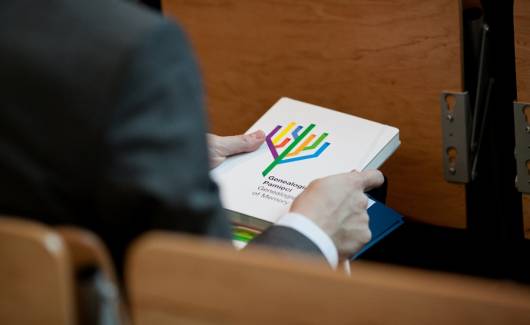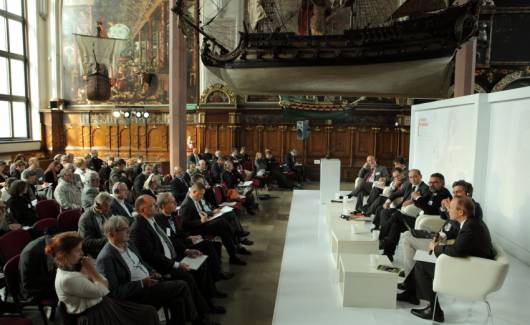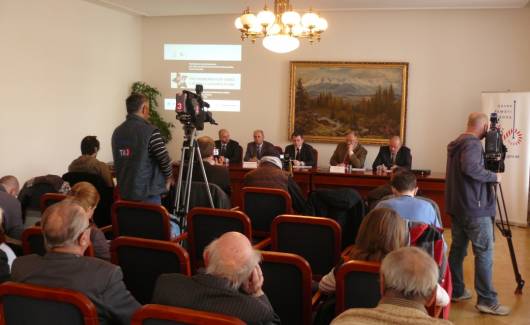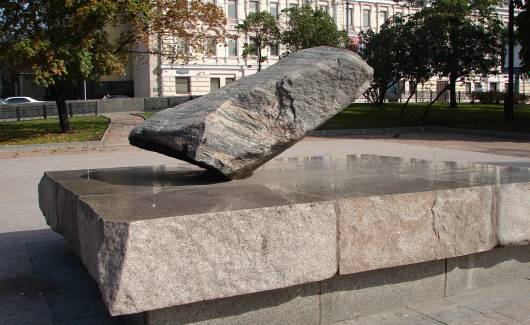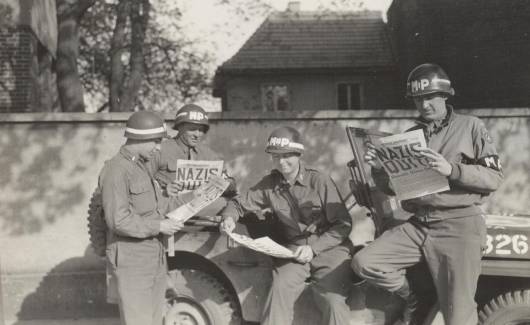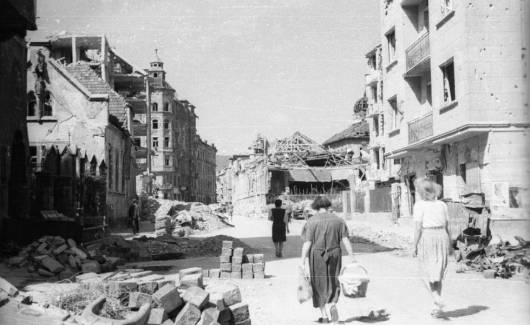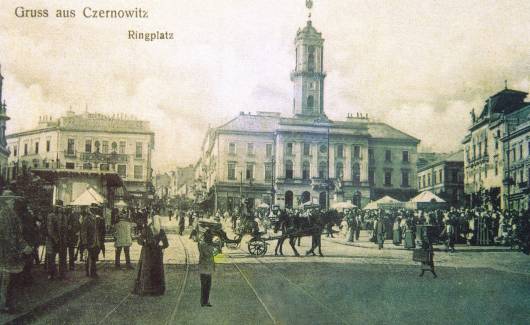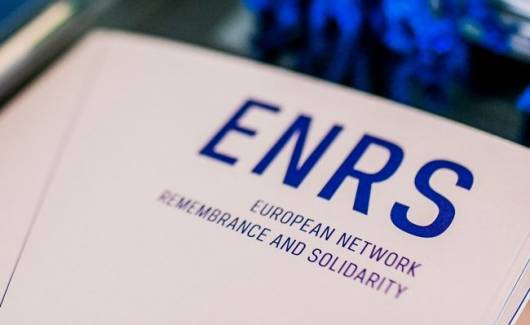ABSTRACT
Recent calls for a shift of the centre of gravity of memory in Europe are confronted with a deep asymmetry in master narratives in political societies across the former Iron Curtain. This paper examines the experiential basis under which narrative commitments have been made in Eastern Europe. The major focus here will be on the dialectics between spaces of experiences and horizon of expectation. Like individuals societies acquire habits of remembering, which are transmitted, challenged, and collected across the inter-generational memorial fabric. The basic argument defended here is that societies are initiated into interpreting their past by ‘learning’ specific acts of commemoration, performance, and ritual. The past is thus to be considered not as a by-gone and well defined period but rather a social organism in gestation. This paper first examines how experiences of state-formation, conflict, and practices of communist rule have been stored in Eastern Europe’s cultural memory. It then goes to suggest that the search for constitutive mythologies needs to take into account that in Eastern Europe different ‘initial zeros’ are competing with each other. Experiences of forgetting, the impact of cultural trauma on carriers of memory, and the difficulty to code performative rituals of memory account for a lack of sense of rupture with the past.
Shifting the Centre of Gravity of Memory?
In his address to the Memory at War project at Cambridge in 2010, Jay Winter urged shifting the centre of gravity of memory in Europe. A shift from Paris to Warsaw would make ‘European memory’ look very different. This call, both overdue and necessary, points to the potential integration of master narratives by discovering commonalities and analogies. Such integration would explore the roots of dissonances and conflicts arising from cultural traumas such as world wars and genocide, which are cognitively remembered but whose experiential background is fundamentally different. However, it is also deeply problematic because it potentially relativises the founding narratives of post-war Europe. In Western Europe, the politics of official apologies and regret have progressively instrumentalised the ‘duty to remember’ into political strategies of governing by looking back. Such practices rely not only on moral judgements about the nature of totalitarian regimes and the impact of genocide, but also on practices of transitional justice and policies of compensation, rehabilitation, and the political recognition of collective belonging to the citizenship of minority groups or former victims. Conversely, post-communist Eastern Europe has been characterized by divided memories and systematic attempts at historical revisionism, in which nationhood is rewritten as a constant and finally successful struggle against foreign domination. Historical revisionism addresses a triple task: it aims at genetic interpretations of the origins or beginnings of independent statehood; it focuses on heroic narratives of resistance, liberation, and survival in order to establish and maintain positive discursive and narrative markers of nation-building; and it maintains the centrality of collective victimhood for the political community.
Narrative commitments to specific memory regimes depend on how experiences and expectations are recast and imagined in the evolution of political societies. Such narrative commitments cannot be mastered from the knowledge, practices, and duties that have been generated under specific experiences. Rather, they originate in the cultural memory of each society. Like individuals, societies are initiated into interpreting their past by ‘learning’ habits of remembering, performance, and ritual, which are transmitted, challenged, and collected across generations. My hypothesis is that the experiential basis of narrative commitments is fundamental for understanding the integrative or potentially conflictual nature of constitutive mythologies. In Reinhart Koselleck’s terms, ‘there is no collective memory but there are collective conditions of potential memories’.1 We have first to clarify the conditions under which terminological, ethical, normative, and political dimensions of memory have evolved. Shifting the gravity of memory towards Eastern Europe cannot simply imitate the western model.
The analysis proceeds in three steps. First, taking the departure from an analogy between comparative democratisation studies and memory studies, I suggest that hegemonic models of ‘memory by western design’ unduly discount the communist experience. Second, following Koselleck, I shall suggest that the cultural specificity of memory regimes includes particular forms of making sense of experience and expecting alternative futures. If memory is a carrier of meaning, it is imperative to understand how carriers of memory make sense of violence, trauma, and despair in the tension between experiences and expectations. Finally, the hegemony of western memory models depends on the ways carriers of memories across complex socio-political processes have established ‘founding’ memories by means of performative habit.
Mapping the Field
Aware of the deep asymmetry in European memory, the new members who joined the European Union in 2004 claimed the need for the acknowledgement of differences in historical legacies. A memorandum drafted by prominent historians from Eastern Europe argued that the new Europe has brought new historical experience, new grievances, and new complaints, all ignored in the West so far.2 In their view, the more established western members have not forgotten their past. Rather, they have had the opportunity to reassess it and thus have found more common values to share. Since Eastern Europeans did not participate in the process of ‘constructing Europe’, their experience of the shared values of Europe is bound to be thinner, as is their understanding of the informal rules and meanings. If Europe wants to unite, questions such as ‘What is the full history of Europe?’ or ‘How do we deal with different histories within Europe?’ must be asked.
Such asymmetries are problematic for two main reasons. On the one hand, accepting founding narratives of post-war construction in Western Europe, based on normative claims for reconciliation, apology, and regret, would neglect the ‘eastern’ communist experience. On the other hand, evaluations of Eastern European memory work within conceptual paradigms that are hegemonically western’. To illustrate the notion of hegemony a quick glance at the literature on democratic and capitalist transitions in Eastern Europe may be instructive. Nearly two decades ago, scholars of comparative democratisation argued that, for all its particularity, Eastern Europe could nevertheless be summarised under the conceptual apparatus of the ‘transitions to democracy’ paradigm.3 They were opposed by another group of scholars who suggested that, culturally and historically, the East European experience was unique. Both sides of this literature worked with the axiom that democracy was a normative goal. The transition to a market economy was also assumed to be a central goal, which had to be designed democratically. The problem here was not only how to achieve various transitions – in society, politics, the law, and the economy – simultaneously. It was also the monopolistic status of liberal capitalism by democratic design that was introduced in a fundamentally undemocratic way, making choices or alternatives obsolete.
Can debates about memory politics learn from the controversies about transitions to democracy? An important tendency in Western scholarship has replicated this idea of a normative goal within memory studies. Apologetic forms of political memory based on the hegemonic anti-fascist narrative are fundamental to the legitimisation of the post-war reconstruction of Europe. In Western Europe, this ‘normality’ has been profoundly shaped by the legacy of the transitions from authoritarian rule towards democracy and the normative signposts formulated in international law after 1945. As Jeffrey Olick showed, this politics of regret is the contingent outcome of socio-political processes across the political evolution of western societies.4 From the perspective of citizens of the new Europe, building European identity on strategies of forgetting appears ill-suited. On the one hand, the shaping of collective memory is required as a moral imperative but also as a political necessity, aimed at appeasing identityconflicts between ethnic groups or social classes but also at acknowledging wrongdoings against minorities. On the other hand, memory appears helpless against the challenge to commemorate crimes of absolute evil, to remember as ‘it truly was’. Precisely because memory is inherently contentious and partisan, authors such as Tony Judt argued that only the historian can ensure that Europe’s past can furnish Europe’s present with admonitory meaning and moral purpose.5 In the centre should be an ‘austere passion for fact, proof, evidence’.
Both positions share a central characteristic: evaluations of the past limit memory to a function of the present, an affair of the living. Memory by ‘western design’ evokes a programme of pedagogical assistance based on a greater degree of maturity, knowledge and societal development. The ‘western experience’ has not only a well-established anti-fascist narrative of European integration in place. The politics of enlargement also include the ingredients for a moralising narrative of the duty to remember based on the idea of reconciliation around the genocide perpetrated by the Nazis.
Conversely, the ‘eastern experience’ in the guise of the ‘double legacy’ of Nazism and Soviet communism has recently been used to magnify the level and gravity of victimhood in the ‘bloodlands’ of eastern Europe.6 Rather than being seen as the contingent outcomes of a specific experience, ’dealing with the past’ and the drawing of history lessons follow paths of memory politics by western design. As Judt argued, since 1989 Europe has been constructed upon a ‘compensatory surplus of memory’. The focus was on institutionalised public remembering as the very foundation of collective identity. For Judt, this will not endure. Some measure of neglect and even forgetting is a necessary condition for civic health.7 Garton Ash suggested that the path of history lessons and ‘truth-telling’ may be more promising than trials or purges. Historians would be the professionals best equipped to teach these lessons.8 He advocates putting texts into historical context, applying intellectual distance but also essential imaginative sympathy with all the men and women involved. Only historians with their impassionate, objective, and scholarly scrutiny are able to achieve history lessons. If purges, trials, or rehabilitation programmes are impracticable, is it the historian’s duty to teach people lessons of remembering? The claim for history lessons has an air of normality around it. Rather than succumbing to myths, narratives of heroic sacrifice, or ever-present memories of martyrdom, the idea is to become a normal country.
Experience and Expectation
Narrative commitments are made by carriers of memory who give meaning to experiences. Fundamentally, cultural and social forms of memory also define new expectations that make life worth living, political dreams realistic, and construct the foundations for a better future. In the transitions to the capitalist market economy and to political democracy, people in Eastern Europe craved the normality of the West. The experience of communism could be overcome by reaching out for the expected bright future, characterised by democracy, capitalism, freedom, and normality. The idea of approaching 1989 as the overcoming of some specific experience and the opening up of new expectations raises interesting analogies with the establishment of communism in the region. More fundamentally, however, it opens up the question of how to understand memory regimes in the tension between experience and expectation.
I would like to introduce here a categorisation developed by Reinhart Koselleck, which is the distinction between experience and expectation.9 Koselleck’s hypothesis is that the temporality of history and of human beings depends on anthropological foundations such as experience and expectation. The weight of each and their mutual relationship have changed across the course of history and thus enabled potential histories and different perceptions of time. Koselleck originally suggested that modernity – besides many other particularities – is characterised by specific perceptions of time. He located in the French Revolution a movement that would leave spaces of experience (Erfahrungsraum) behind, whilst focusing attention and energy on horizons of expectation (Erwartungshorizont). Experience can be understood as a contemporaneous past, whose events have become internalised and can be remembered. This accounts both for rational thinking and for unconscious attitudes. Even very ‘minor’ occurrences in personal lives can produce big effects. Individual memory is always social memory, insofar as anyone’s own experience contains experience of others mediated through distant historiographical sources, inter-generational narratives, institutions, or the media.
Similarly, expectation is related to individuals and to collective groups. Expectations are formulated in the present; they are a contemporaneous future, aiming at the not yet experienced but at what can be hoped, feared, or anticipated, through rational analysis or through diffuse and hazy expectation. Yet, the presence of the past is different from the presence of the future. For experience, it is adequate to use the metaphor of ‘space’ because, despite chronological specification, experience is seen as a totality that assembles different layers of earlier times. It can be likened to the glass front of a washing machine, where various bits appear but are contained in the same drum. Conversely, expectation is closer to the metaphor of the horizon. The future confronts an absolute limit that can only be anticipated, not experienced.
Spaces of experience and horizons of expectation are socially reconfigured with the passage of every generation. The crucial point is that biological decline and renewal are the conditions that enable meaningful connections between present and past, and perception of historical continuity across the longue durée. Carriers of memory grow old and die whilst new people are born and enter the social world. In a seminal essay on the links between the transformation of language and event-history, Reinhart Koselleck made the case for the meta-historical biological preconditions for history, which precede and remain outside language.10 The time span between birth and death determines human finitude. Diachronically, the constant transitions between earlier and later are crucial for any history to be perceived as a meaningful sequence of occurrences. This perception of temporalities is not a matter of either individual recollections or collective forms of commemoration. Rather it is structured by the sequence of generations.
New generations usually enter into conflict with the values and aims of their parents and the established generation. If the parental generation has failed miserably, this conflict may become very polarised. The fact that most Germans nowadays consider Nazi Germany’s surrender in 1945 not as a defeat of the nation but as the liberation from a dictator owes a crucial debt to the generational conflict after World War II.11 In West Germany the fathers’ generation – who had held responsibility during Weimar and the Nazi regime – had to cope with individual guilt and self-blame. The young post-war generation, however, had to face not only military defeat but also the stigma of belonging to a nation responsible for barbaric acts. The collective guilt imposed on Germany by the outside world made people born just before or after 1945 emphatically reject what had been most sacred and meaningful to their fathers: patriotic glory and national greatness. Experience is transformative. Living through critical junctures changes states of consciousness and shapes ways of remembering and forgetting. Any society, nation, regional community, or generational unit has its own formative experiences that will support the constitutive imagination in cultural memory. I shall briefly discuss the Eastern European experience of state-formation, the tension between admiration and resentment in relations with Western Europe, and the impact of the Yalta system. Eastern Europe has been a transitional zone between Western and Eastern models of state-formation. The dominant role of the state contrasts with the subordinate role of society, which could not develop spheres of economic and legal autonomy similar to societies further West. The late achievement of independent statehood for some countries, and the frequent dismemberment, invasions and foreign rule as well as territorial instability of others, would shape expectations in the cultural unconscious, which focused on redemption from servitude and backwardness but also on the return to some form of normality. In the particular case of Poland, different institutions symbolically maintained the notion of the nation in cultural memory in the absence of a territorially independent state between 1795 and 1918. In Poland, meanings of power (władza) have been strongly linked to foreign domination, whereas society (społeczeństwo) carried connotations of an independent nation. The nation was associated with imagination, a reality to be aspired to rather than an existing collective reality that could be engineered by the tools, devices, and educational policies at the disposal of a central state. The central goals of social movements such as Solidarność were formulated as aspirational utopias focused on romantic ideas, strongly embedded in cultural memory, of gentry democracy or the myth of the subjectivisation of the nation. The fundamental characteristic of many Eastern European societies after 1989 could be seen in a schismogenic dynamic where versions of the ‘miracle myth’ promised a better future and a ‘return to normality’. This better future would be provided by the economic, technological, and socio-political benefits of western capitalist democracy. Meanwhile, key events in the nation’s pre-communist past would mobilise memories that would shape identities through discursive strategies such as ‘back to the truth’, ‘back to the nation’, ‘back to normality’, ‘back to Europe’, or ‘back to the present’.12
Another founding element in the cultural memory of many eastern European nations is the experience of a civilisational divide: Few ‘westerners’ conceive of the ‘enlargement’ of the European Union other than in terms of a generous gift offered by Europe. ‘Europe’ here means ‘western’ Europe, the free and civilised part, which was not the Europe behind the Iron Curtain. From the ‘inside’ perspective, however, Poles, Czechs, Latvians and others subjectively regarded themselves as an integral part of (Western) Europe. If they already belonged ‘naturally’, the notion of enlargement was either offensive or nonsensical, and possibly both. As former Hungarian prime minister József Antall put it, Eastern Europe had won the third world war for the West without firing a shot, but this expression of love was unrequited. Not unlike the adoption of market capitalism and the transition to democracy, Eastern Europeans have looked towards the West in a mix of admiration, neediness, and resignation in order to be recognised as ‘equals’.
Major turning points in the twentieth century have produced different social memories. The collapse of empires in 1918 became the opportunity to re-establish the Polish republic and to achieve independent statehood in the Baltic republics. Czechoslovakia appeared on the map as an independent state, whilst Hungary lost two-thirds of its territory, a cultural trauma it has not yet overcome. Recently, Adam Michnik compared the round-table negotiations in 1989 with the beginnings of the Second Polish Republic under conditions of extreme contention, mob violence, and political assassination.
The often evoked moralisation of international politics after World War II, which can be exemplified in the Nuremberg trials, the genocide convention, and the Universal Declaration of Human Rights in 1948, was not a founding experience of states on the eastern side of the Iron Curtain. Due to the socialisation of warfare, the extermination of enemies of the people or entire collective groups due to their racial, ethnic, and political difference, trauma was not to be communicated to the outside world, expanding knowledge and creating empathy. Besides a heavy blood toll, devastation, and mass expulsion, the end of the war bequeathed deep moral confusion, leaving many of these societies in an in-between condition, between victory and defeat or ‘victory in defeat’.13 For much of non-Russian eastern Europe, World War II cut off ties with the West.
Memories of threats to the nation produced particularly strong narratives, which narrowed down the nation to ethnic and racial conceptions with disastrous consequences.14 Experiences of state-formation, of perceived backwardness in relation to the west, and of ‘defeat in victory’ after a world war produced expectations that were based on cultural memories of experiences of humiliation and suffering but also on redemptive myths of belonging and new beginnings. One could certainly make the case for seeing the ‘memory boom’ in the social sciences and in Western Europe as a reflection of a somewhat opposite dynamics. The disillusionment with expectations would focus societies back onto their experience. The demise of ideology, the dissolution of utopian promises, the lack of alternative models to established capitalist modernity, and the growing uncertainty about the future have fuelled the discovery of memory. The distinction between Eastern and Western Europe was reinforced by the establishment of communist regimes during and after World War II. Their practices of fashioning experiences and expectations systematically eliminated elites, destroyed the built environment, and promoted mythic time dimensions. These practices placed serious difficulties in the way of making narrative commitments to constitutive mythologies, and on the contrary entailed schismogenetic forms of contested narrative commitments.
Following Nietzsche, only that which is burnt into a human being and does not cease to cause pain can remain in memory.15 Human beings build identity and the possibility of life in general on the capacity of forgetting. In eastern Europe, a series of socially traumatic experiences led to the disintegration of identities, forced expulsion, foreign domination, and the impossibility of mourning victims and commemorating traumatic events. The systematic destruction of elites was a central element of Nazi occupation, in particular in Poland. The systematic uprooting of people by communist regimes destroyed experiences by transforming language into meaningless Newspeak in the service of power. As a consequence, narrative and performative commitments to critical self-assessments or the acknowledgement of guilt have been rare. The implementation of communism in Russia after 1917 and in Eastern Europe in the wake of two devastating world wars failed to establish a firm narrative commitment to one founding generation.16 In Russia, the Bolsheviks had grown up as outsiders, exposed to exile, persecution, and suffering. Bolshevik communists aimed to uproot people by systematically attacking the very foundations of interpersonal links, cultural reference-points, and sociability. Not only did the Communist party apply rigorous forms of self-confession, purges, and trials. Stalin’s Great Terror was also a terminal assault on the revolutionary generation of the original Bolsheviks. Elites in the inner circle of Stalinist power lived in fear of annihilation as potential victims of their enemies and recipients of suffering, a condition that only came to an end after Beria’s death in 1953.
The establishment of communism in post-1945 Eastern Europe coincided with the social revolution of the mass killing of elites, expulsion of minorities, border changes, and failed uprisings. The annihilation of the Polish state in 1939 was accompanied by the ruthless occupation regime and the extermination of approximately two million members of the professional and intellectual elites. The self-sustained, society-wide underground state and the ultimately unsuccessful resistance movements added to the failure of the Polish elites to redeem the country from the double invasion of 1939. This moral confusion fell on fertile ground in a region where myths of victimhood were particularly pervasive. Although the post-totalitarian system abandoned the practice of purges, it relied heavily on ritualistic self-censorship and dissimulation in behaviour typical of Soviet citizens, making the switching of faces a ritualised skill. The line of culpability ran through individuals themselves.
Communist regimes were anti-modern in ideology but hyper-modern in the ways they aimed to reconfigure states and societies in practice. As a consequence of the way state-building processes have worked in Eastern Europe, as well as of the establishment of Soviet communism after 1945, time regimes have privileged future utopias as opposed to spaces of experience. Communism appeared in an economically backward society. Whilst rejecting capitalism and democracy as organizational forms of modernity, it was hyper-modernist in embracing ideas of social engineering and progress in order to catch up with and overcome the West. One central focus of social engineering was to uproot people from their habitual locus, traditional living environment, and social habits. In the Soviet Union, the social upheavals in the 1920s and 1930s left a durable effect on demography, industry, urban life, and agriculture. Stalin’s revolution from above transformed a rural country, where on the eve of the First World War between 80 and 85 percent of the population lived in the countryside, into a country where, in 1990, 66 per cent of the population lived in cities. The destruction of the built environment and the uprooting of people from their homes in the industrial revolution resulted in a ‘car pulled by a horse’, whilst the urban revolution led to ‘cities without citizens’.17
As Paul Connerton has argued, modernity is characterized by forgetfulness.18 The major source of forgetting is associated with processes that separate social life from locality and from human dimensions. The increased scale of human settlement, the production of speed, and the repeated and often intentional destruction of the built environment have all generated a diffuse yet all-encompassing and powerful amnesia. In Connerton’s view, locus is a more important carrier of place memory than memorial. The memory habit of being ‘at home’ is very inexplicit, experienced daily and therefore inattentively, in a state of distraction. Conversely, remembering by establishing places of memory speaks of fears of amnesia. ‘The threat of forgetting begets memorials and the construction of memorials begets forgetting.’19
Finally, the falsification of history by organised forgetting would promote mythical time-dimensions. The ‘permanent revolution in one country’ imposed a latent civil war on Soviet society, producing a recurrent loss of memory.20 In Solzhenitsyn’s words, ‘we forget everything. What we remember is not what actually happened, not history, but merely that hackneyed dotted line they have chosen to drive into our memories by incessant hammering… It makes us an easy prey for liars.’21 As Connerton put it, ‘to remember, then, is precisely not to recall events as isolated; it is to become capable of forming meaningful narrative sequences. In the name of a particular narrative commitment, an attempt is being made to integrate isolated or alien phenomena into a single unified process.’22
According to Katherine Verdery, for instance, time regimes in Romania kept people permanently off balance.23 This etatisation of time undermined the sense of a ‘normal order’ and entailed a yawning gap between elites and the population. While party elites lived by promised images of a radiant future, the populace lived with an impression of flattened time and endless repetition. Communism stripped history of its eventfulness, squeezing societies between a promised utopia and a range of foundation myths. Heroic narratives and narratives of martyrdom and victimhood led not only to practices of screening, retribution, or disqualification, but also to a pervasive sense of domestic ‘enemies’ and the escalation of ethnic violence.24 After 1945 Yugoslav state propaganda used myths of anti-fascism, the founding partisan experience, and the idea of brotherhood and unity as the dominant drivers of official memory. A central ‘fact’ in history books was to fix the total number of Yugoslav dead during World War II at 1.7 million, considerably higher than the historically more accurate 1 million. In the climate of growing tensions amongst the federal republics and after Tito’s death in 1980, the second post-war generation, especially in Serbia, would use these numbers to ‘prove’ the huge numbers of Serbs killed by Croatian Ustasha. In the memorandum of the Serbian Academy of Sciences of 1986, Yugoslav history was portrayed as a systematic persecution of the Serbian minority, threatened by physical annihilation.25
The Search for Constitutive Mythologies
What has become clear from this outline is that the legacy of communism or the ‘eastern experience’ of memory has to be addressed by looking at different layers of spaces of experience. Notions of ‘western’ and ‘eastern’ experience are much more than narratives of collective suffering, collective heroic resistance, or the incapacity of dealing with the past would have it. The ‘legacy of communism’ is, therefore, not only a space of experience that needs to be overcome. The communist experience produced dialectics between death and birth, decay and renewal, violence and the sacralisation of its victims, all of which have engendered different habits of memory. The evolution of communism was punctuated with liminal moments in which experiences and expectation were decisively re-imagined or forgotten, but also incorporated into new habits.
As Michel de Certeau has argued, historiographical discourse engages with the modalities of what was once a liminal in-between situation, an ‘initial zero’.26 Because the beginnings of the history of nations, classes, or empires are lost objects, the task of historiography is to represent a scene of violence which is concealed and erased from memory. In other words, the death that made it all possible is kept alive by historiography in order to play an ‘active’ role in the sense of structuring social relations. Potential ‘initial zeros’ abound in Eastern Europe. As Tony Judt put it, Eastern Europe is scattered with islands of the past: 1918, 1938, 1939, 1940, 1945, 1948, 1956, 1968, 1980, 1989; it is difficult to point to a clear hierarchical order of decisive turning-points which would become markers of certainty in social imaginaries.
We are not only the past that we (can) remember but we are also the past that we can forget. Communist manipulation of history could organise forgetting for the purpose of distorting historical truth, but it did not produce blessed acts of oblivion. In contrast to the memory of Auschwitz in Germany, memories of key events such as World War II, the Polish Solidarity movement, or the Round Table are anything but unequivocal. Frank Ankersmit made an interesting distinction between four types of experience of forgetting. The first type of forgetting refers to those aspects of the past that are devoid of any relevance for our present or future identity. The second type concerns forgetting something that is truly relevant to our identity and our actions, though we were unaware of this importance. The third refers to events that put too much of a strain on collective consciousness, causing pain or trauma. The outstanding event of that type in the twentieth century is the Holocaust, which was ‘forgotten’ in Germany and elsewhere over approximately two decades. In the fourth type, this forgetting of a trauma is arguably not possible. One may think of the great transformations such as revolutions or socialised warfare. What is relevant here is the distinction between the third and the fourth types of forgetting as to the quality of the trauma and the possibility of creating a new identity. In the third type of forgetting, however dramatic, two identities may coexist (the former one and a new identity, crystallising around the traumatic experience), whilst in the fourth type of forgetting historical transformations cause feelings of a profound and irreparable loss, of cultural despair, and of hopeless disorientation. Traumatic experiences become more dramatic, since a former identity is irrevocably lost forever and superseded by a new historical or cultural identity. Consequently, the new identity is constituted by a trauma for which no cure is to be found and which leads to a permanent loss of the former identity.
In Eastern Europe, the competition between victims for a higher status of victimhood exemplifies the difficulty of forgetting. In Poland, the spirit of defeat in victory after 1945 propelled myths of martyrdom and active heroism. The different expectations of Poles and Jews after 1945 led to competing and often conflicting accounts of sufferings during the Nazi occupation. Essentially, ‘the Poles competed with the Jews for [the] palm of martyrdom. Both sides accuse each other of the heinous theft of suffering.’27 As Meike Wulf has pointed out, two narratives are central to the new anti-communist memory regime in the post-Soviet space. These are the ‘narrative of collective suffering’ (of nations oppressed by Soviet Russia) and the narrative of ‘collective resistance’ (against foreign occupation). The former was the prevailing political narrative of the 1990s, whilst the latter came to be prominent around the time of EU accession. The narrative of collective suffering is an attempt at redressing the imbalance caused by one-sided Western approaches which place a greater emphasis on the suffering caused by Fascism.
In post-communist Estonia, the narrative of collective suffering concentrates on the Estonian suffering under Soviet rule while issues of collaboration with the occupiers are being blanked out from the national martyrology as part of the externalization of the communist past.28 The narrative of collective resistance glorifies national heroes and is exemplified in the new Victory Cross on Tallinn’s Freedom Square, which was intended to be unveiled in time for the 90th anniversary celebrations of the Estonian Republic in 2008 commemorating the Freedom Fighters of the war of independence (1918-20) and by extension all the Freedom Fighters of subsequent wars, such as the anti-Soviet partisans (the ‘Forest Brethren’), the Estonians fighting in the Finnish Army, and indeed in German uniform. This shift from suffering to resistance may further be explained by the fact that in the long run, national identity cannot be consolidated on a negative self-image of suffering (and the trope of victimhood), but needs a positive basis instead. When comparing this to the situation of postreunification Germany, a reverse process can be observed as an increasing focus was placed on the suffering of the German perpetrators and more broadly of German civilians during the war (while the question of German guilt has been increasingly re-contextualised in a European context). After 2003, Polish public opinion was deeply critical of tendencies in Germany to create a Zentrum gegen Vertreibungen (centre against expulsions). It was felt that these commemorative efforts by Germany signified a grave form of historical revisionism or relativism that would turn ’perpetrators into victims’.
The recent Katyń catastrophe symbolises this strong tension in diametrically opposed interpretations.29 The heroic interpretation sees the deaths of president Kaczyński and his fellow passengers in a plane crash in Smolensk on April 10, 2010 as another heroic sacrifice in the on-going struggle against the evil empire of Russia. The rival interpretation takes Kaczyński’s determination to pay a visit to the Katyń site three days after prime minister Donald Tusk’s visit at the official invitation of Vladimir Putin, and to force a landing there in critical weather conditions, as an indication that the victims are Kaczyński’s victims. Ultimately, the sense of imagination of Polish victimhood, martyrdom, sacrifice, and living in the past hinder Poland’s turn toward a future in Europe and the country’s liberation from its own past.
Storage forms of memory point to the resonance of the cultural unconscious. A large part of our memories, in a Proustian twist, ’sleeps’ within our bodies until it is awakened or triggered by some external, often haphazard, stimulus. The learning of memory is often an unconscious and non-agentive process. The Prague Spring, for instance, would mean different things to different age-contingent communities. In Czechoslovakia, the Prague Spring did not arise as a spontaneous happening but was, in Vaclav Havel’s words, the result of a gradual awakening, a sort of creeping opening up of the ‘hidden sphere’ of society.30 The defeat of reform attempts within socialism would, by the late 1970s, mark a radical shift.31 Whilst before 1968, young radicals wanted to reform socialism, the formative experience of their generation – the failure of the Prague Spring and the Soviet invasion - would become central to the political identity of dissidence per se. However, much as western radicals did not see that the real event of 1968 was, in Rudi Dutschke’s words, not Paris but Prague, so too many radical easterners also failed to see its meaning. In Hungary, for instance, opposition figures would become convinced that the defeat of the Prague Spring finally revealed the ’true meaning’ of the destruction of the Hungarian uprising in 1956. After 1989, memories of the domestic ’small revolutions’ were sidelined from official memory. With regard to 1968, shame loomed large as the source of the lack of interest professed by the Czechs for their recent past. This shame or even cynicism might stem from the irreconcilability of two histories or truths that were inherent to 1968: on the one hand, the account of a civic, human, and spontaneous Prague spring; on the other, the representation of 1968 as a failure rooted in the political naivety of Czechoslovaks.
Such a position casts doubts on propositions by historians who have suggested the need for coming to terms with the past by learning ‘history lessons’. Historians are after all products of generational chains with key formative experiences. Their professional work also reflects their search for meaning amidst passions, constraints, and social and individual memories that resonate in their expectations. In a recent study on post-Soviet historians in Estonia, Wulf and Grönholm used generational group identities among Estonian historians to examine how professionals engage actively in the transformation processes and support nation-building processes.32 They elaborated on four different strategies Soviet historians used in response to the new conditions of historical research - conformism, opportunism, withdrawal, and passive resistance – and relate these strategies to different generational groups of Soviet historians. Their post-1991 biographic accounts show how various modes of talking about past experiences, such as glorification, denial, self-justification, apologetics, distancing, resignation, and destiny reveal strategies of coping with loss and of generating new meaning.
Finally, Eastern Europe lacks a sense of rupture with the past. The collapse of communism occurred not in a war or a violent revolution, but by means of peaceful, negotiated pacts. Unlike the authority vacuum of Germany, a distinct set of backward movements aimed to retrieve expectations for the future from an often by-gone past. The Polish writer Gustaw Herling- Grudziński deplored the fact that Poland in 1989 lacked a cathartic rupture with the past such as occurred in post-World War II Europe. Purges such as in post-war France or Italy or trials such as Nuremberg were impossible. The only systematic trials occurred in reunified Germany, a special case given the ‘colonisation’ of East by West Germany. In this sense, the peaceful transition from communism became a curse because the dividing lines between friend and enemy, victim and perpetrator, judge and accused were blurred. It is often said that memories became unfrozen only once communism had collapsed. There is some truth to this. However, the opposite perspective is legitimate and even more instructive.
The violent repression of the Hungarian revolution in 1956 and the Prague spring in 1968 have bequeathed social and communicative memories that would become instrumental in the peaceful transition after 1989.33 Much of the work on memory politics in Eastern Europe has focused on difficulties in overcoming the double legacy of Nazism and communism. Memory is often associated with pangs of conscience, cultural trauma, and the difficulty of forgetting. Yet memory, more generally, binds people to commitments in the future. This relates not only to the reliability in relationships and trustworthiness in business, but also to key formative experiences that occurred in the particularly sensitive times of late adolescence and early adulthood.
Appeals to integrate the eastern experience into the founding narrative of European memory abound. In 2008 the signatories of the ‘Prague Declaration’ demanded the formulation of a common European approach regarding crimes of totalitarian regimes and the acknowledgement of the common legacy of Communism and Nazism.34 In line with the ‘Prague process’, an open letter to the EU justice commissioner was authored two years later by six-post communist states (Czech Republic, Hungary, Romania, Bulgaria, Latvia and Lithuania) demanding that the denial of any totalitarian crime should be treated according to the same standard as Holocaust denial.35 In 2009, the European Parliament passed a resolution to commemorate the signing of the Molotov-Ribbentrop Pact of August 23, 1939 as the European Day of Remembrance of the victims of all totalitarian and authoritarian regimes, in a compromise solution rather removed from the demands of various post-communist countries to treat Soviet crimes according to the same standards as the Holocaust, and to put the two totalitarian regimes on an equal footing. Indeed these countries would have chosen a different wording, namely the European Day of Remembrance of the Victims of Stalinism and Nazism. All these attempts at the inclusion of the East European wartime experience into the (western) European memory of the war are not so much a question of political will or crafting of collective memory.
How do memories become lasting markers of foundation or moral markers of certainty? We recall revolutions, wars, or major transitions in a country’s history through personal memories in literary expression, autobiographies, memorials, or semantic symbols. Yet a far more important claim to memory is the fact that social experiences create ritualised habit memory. Habit memory is the capacity to undertake acts of performance. The key idea of a wide range of recent studies in memory is that memory can no longer be seen as a reflection, or a cognitive record of the past. Rather it should be seen as performative. It comes into existence ‘at a given time and place through specific kinds of memorial activity’.36 Theorists of memory such as Paul Connerton and Jan Assmann have provided strong accounts of how commemorative rituals, bodily practices, and the coding of memory allow for remembering such bodies of generative mythology. Jan Assmann suggests that Judaism – in an age of extreme uncertainty – established memory techniques in the service of bonding memory.37 As exemplified in the book of Deuteronomy, symbolic representations and ritual commemoration bind people through techniques such as learning by heart, conversational remembering, oral transmission, or canonization of the text of the covenant (Torah) as the foundation of ‘literal’ adherence.
Such ‘coding of memory’ can become culturally hegemonic. According to Connerton, commemorative ceremonies engage members of the community by enacting cults, encoding gestures, and ritually repeating movements. The aim is to remind the community of its identity. Revolutionary periods leave an extraordinary impact both on the self-definition of the regime and on the social memory of citizens. The emotional intensity of the French Revolution would, as Kant realized at the time, never be forgotten. The Revolution generated rituals as symbolic representations, which unfolded in opposite directions. The trial and execution of Louis XVI was enshrined in a ritual performance of extraordinary power, which not only killed a king but revoked a ruling principle.38 Conversely, the triumph of the people would be remembered through rituals of triumph such as the storming of the Bastille, and also through public festivals.39
We remember how to ride a bike, mow a lawn, or assemble furniture. The memory of these performative acts is like learning a lesson. As Paul Connerton put it, ‘the better we remember this class of memories, the less likely it is that we will recall some previous occasion on which we did the thing in question.’40 This type of memory sustains by far most of our actions in daily life but it is based on forgetting, i.e. on disconnecting with the personal memories of when it was learned or the cognitive memories of how to do it. Yet unless we encounter a problem and have to consult a manual, we would not necessarily recall when, how, or where we learnt it. The emergence of performative habit memory is often rooted in founding or strategic generations. Such carriers of memory will - often with a considerable delay in time – produce a variety of testimonies that they will communicate to their kin, the wider public, and even across national boundaries. This habit memory will inscribe and incorporate its experience into national consciousness through literary expression, semantic symbols, and ritual performance.41
Ritualised habits in West Germany included forgetting values such as glory and patriotism, and learning the internalisation of guilt. In German habit memory, representations of patriotism have become practically impossible.42 The central memorial of the Federal Republic of Germany at the Neue Wache in Berlin now is dedicated to the ‘victims of war and tyranny’ (Den Opfern43 von Krieg und Gewaltherrschaft).44 Referring to the passive Opfer (the victims), it reinterprets the motivations and feelings of German soldiers. Their sacrifice for the nation, i.e. their active Opfer, is ex-post replaced by the idea that they were seduced, corrupted, and died for the wrong cause. It is even more problematic when the term Opfer is applied to the Jews. There is no doubt that the Jews objectively were a passive victim. They were killed practically without resistance; they were not given any chance to commit acts of self-sacrifice. However, official commemoration of the Jews as victims in a not insignificant way subscribes to central elements of Nazi ideology. The Nazis insisted on the necessity to make the Jews the victim par excellence with the aim of ‘liberating’ the world from them. According to Koselleck, this very ambiguity of Opfer indicates the limit of patriotism, which is no longer capable of being represented by monuments (denkmalfähig).
Conclusion
We can now return to some of the implications of a shift of memory’s centre of gravity in Europe. In the social sciences, comparisons usually aim at establishing analogies amongst clearly distinct cases. After 1989, the ‘liberal consensus’ eviscerated historical experience and cultural specificity in the name of hegemonic models. As much as the liberal-capitalist model of development aroused a state of expectation in post-1989 Eastern Europe, ‘memory by western design’ appears to have become the default master narrative, a sort of normative standard by which to ‘judge’ memory regimes. Is the post-communist condition of contested memory regimes yet another scenario in which Eastern Europe has no choice other than to follow western designs? The temptation is great to see contested memories in Eastern Europe as pathological, a continuing nightmare from which it is difficult to awake. Arguments about the incapacity and immaturity to deal with the past abound. The question, however, is whether such claims are intellectually sound and historically tenable.
Memory by western design may suggest a ‘return’ to a normality that cannot be imagined without the ‘western’ experience. The promotion of a ‘return to normality’ by accepting western master narratives as opposed to the various eastern counter-narratives carries the risk of reducing ‘eastern experience’ to the darker sides of communism and pre-communist ‘backwardness’. Such a position would deliberately ‘forget’ about the courageous and exemplary actions that turned acts of violence, humiliation, and indignity into dignified means of protest, national mobilisation, and the voicing of expectations in a way that proved capable of overcoming a despotic dictatorship. Conversely, both the West German and French memory regimes have gone through periods of ‘communicative silencing’, the mourning of victims, and heroic resistance myths. Only gradually – and not without decisive shifts in the self-imagination and performance of political leaders, artists, intellectuals, and the wider public – could the victim syndrome undergo a transition in the direction of a diversity of memories, an increase of official commemorations, and a more critical understanding of the forms of coming to terms – or failing to come to terms – with the past. This paper has attempted to focus on the legitimately ‘eastern’ experiential basis of memory regimes. By attuning habits of memory to the tensions between spaces of experience and horizons of expectations, common forms of memory in Europe need to embrace the changing forms of cultural meanings ‘stored’ in a nation’s memory.
Harald Wydra, a fellow of St Catharine’s College at the University of Cambridge. After studies of history and political science at the Universities of Regensburg and Salamanca, he took a PhD in Social and Political Sciences from the European University Institute in Florence. Before coming to Cambridge in 2003 he taught Political Science at the University of Regensburg. He held visiting fellowships at the
ENDNOTES
1 R. Koselleck, ‘Gebrochene Erinnerung? Deutsche und polnische Vergangenheit’, in: Deutsche Akademie für Sprache und Dichtung (Jahrbuch 2000, Gottingen 2001), pp. 19-32 (20).
2 W. Roszkowski, G. Schopflin, T. Valdo Kelam, G. V. Kristovskis and V. Landsbergis, United Europe – United History: A Mission to Consolidate a Common Memory.
3 P. Schmitter and T. L. Karl, ‘The Conceptual Travel of Transitologists and Consolidologists: How Far to the East should they attempt to go?’, Slavic Review Vol. 53, No. 1 (1994), pp. 183-194.
4 J. Olick, The Politics of Regret (London: Routledge, 2007).
5 T. Judt, Postwar, A History of Europe Since 1945 (London, 2005), pp. 830-1.
6 T. Synder, Bloodlands (New York: Basic Books, 2010).
7 Judt, Postwar, p. 829.
8 T. G. Ash, ‘Trials, Purges, and History Lessons: Treating a Difficult Past in Post-Communist Europe’, in J.-W. Muller (ed.) Memory and Power in Post-War Europe (Cambridge, 2002), pp. 265-82.
9 Koselleck, Vergangene Zukunft (Frankfurt/Main: Suhrkamp, 1989).
10 R. Koselleck, Begriffsgeschichten (Frankfurt/Main: Suhrkamp, 2006), p. 38.
11 See Elias, The Germans.
12 Mikko Lagerspetz, ‘Postsocialism as a Return: Notes on a Discursive Strategy’, East European Politics and Societies Vol. 13, No. 2 (1999), pp. 377-390.
13 K. Kersten, The Establishment of Communist Rule in Poland 1943-1948 (Berkeley and London: University of California Press, 1991), pp. 469-70.
14 See Adam Michnik’s analysis of the ‘Polish gutter’ and the extreme version of Polish nationalism in the early days of the Second Polish Republic, in A. Michnik, In Search of Lost Meaning (Berkeley, London: University of California Press, 2010).
15 F. Nietzsche, Werke in Drei Bänden, Band 2 (Darmstadt: Wissenschaftliche Buchgesellschaft, 1997), p. 802.
16 For a more systematic development of this argument see H. Wydra, Communism and the Emergence of Democracy (Cambridge: Cambridge University Press, 2007), pp. 111-61.
17 Quoted in K. Pomian, ‘Anatoli Vichnevski. La faucille et le rouble’, Le Débat 107 (1999), pp. 59-60.
18 P. Connerton, How Modernity Forgets (Cambridge: Cambridge University Press, 2009).
19 Connerton, How Modernity Forgets, p. 29.
20 H. Wydra, Communism and the Emergence of Democracy (Cambridge: Cambridge University Press, 2007), pp. 122-28.
21 A. Solzhenitsyn, The Gulag Archipelago: An Experiment in Literary Investigation, Vols I and II, translated from the Russian by Thomas P. Whitney (Boulder, 1998), p. 299.
22 P. Connerton, How Societies Remember (Cambridge: Cambridge University Press, 1989), p. 26.
23 K. Verdery, What was Socialism and What Comes Next? (Princeton: Princeton University Press, 1996), pp. 54-57.
24 Wydra, Communism and the Emergence of Democracy, p. 232.
25 Wydra, Communism and the Emergence of Democracy, p. 201.
26 M. de Certeau, L’écriture de l’histoire (Paris: Gallimard, 1975), p. 74.
27 P. Wrobel, ‘Double Memory: Poles and Jews after the Holocaust’, East European Politics and Societies, Vol. 11, No. 3 (Fall 1997), pp. 560-74.
28 J. Mark, The Unfinished Revolution (New Haven, London: Yale University Press, 2010).
29 See A. Nowak, Memory at War Newsletter, 2011, 3-4.
30 V. Havel, ‘The Power of the Powerless’, in J. Keane (ed.) The Power of the Powerless: Citizens Against the State in Eastern Europe (London: Hutchinson&Co., 1985), p. 43.
31 P. Apor and J. Mark, ‘Mobilizing Generation: The Idea of 1968 in Hungary’, in B. Weisbrod (ed.) Generational Belonging and the 68ers in Europe (Gottingen: Wallstein Verlag, 2011), 99-117.
32 M. Wulf and P. Gronholm, ‘Generating Meaning Across Generations: The Role of Historians in the Codification of History in Soviet and Post-Soviet Estonia’, Journal of Baltic Studies, Vol. 41, No. 3 (2010), pp. 351-382.
33 For detailed analysis see Wydra, Communism and the Emergence of Democracy, pp. 219-43.
34 See for the full text of the document defending history.com/Praguedeclaration.
35 See: www.radio.cz/en/section/curraffrs/czech-mep-throws-damper-onappeal- for-eu-ban-on-denial-of-communist-crimes (accessed 30.09.2011).
36 N. Wood, Vectors of Memory. Legacies of Trauma in Postwar Europe (Oxford: Berg, 1999), p. 2.
37 J. Assmann, Religion and Cultural Memory (Stanford: Stanford University Press, 2000), pp. 16-21.
38 P. Connerton, How Societies Remember (Cambridge: Cambridge University Press, 1989), pp. 7-9.
39 W. H. Sewell. Logics of History(Chicago, London: University of Chicago Press, 2005), pp. 225-70.
40 P. Connerton, How Societies Remember, p. 23.
41 For an analysis of generations of English poets and writers as makers of national consciousness, see B. S. Turner, ‘Strategic Generations: Historical Change, Literary Expression, and Generational Politics’, in J. Edmunds and B. Turner (eds) Generational Consciousness, Narrative, and Politics (Lanham: Rowman&Littlefield 2002), pp. 13-29.
42 Koselleck, Begriffsgeschichten (Frankfurt/Main: Suhrkamp, 2006), pp. 232-3.
43 The German word Opfer combines the meaning of victim and sacrifice.
44 It features the sculpture Mother and Her Dead Son by Kathe Kollwitz and was inaugurated in 1993.
This article has been published in the first issue of Remembrance and Solidarity Studies.
>> Click here to see the R&S Studies site
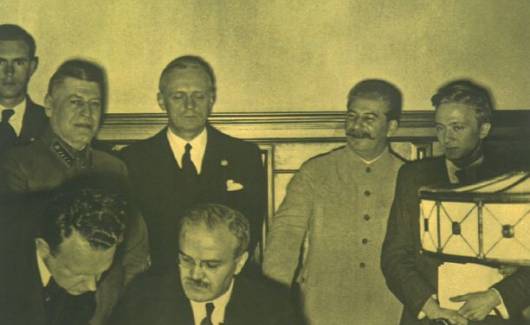
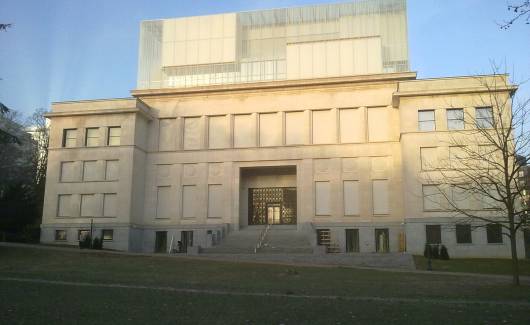

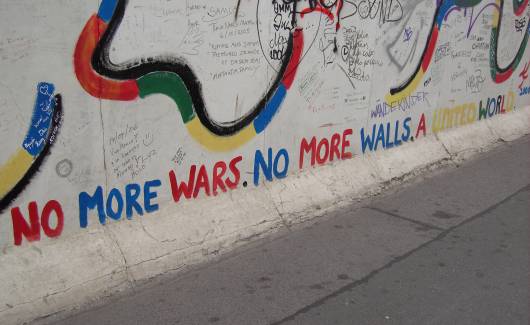
![Photo of the publication Conference Report: The Loneliness of Victims. Methodological, Ethical and Political Aspects of Counting the Human Losses [...]](https://enrs.eu/media/cache/thumbnail_530_325/uploads/media/5c5ae6487fcdd-imgp6728.jpg)

